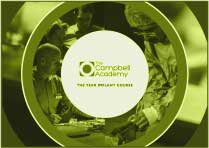
If you're reading this blog and you find yourself in the privileged position of being senior in an organisation or having a role that requires you to set an example to maintain the culture of an organisation, then you may find this helpful.
If you're reading this blog from a position of someone who has someone like that directly above you in an organisation, you may find it helpful, too.
For any of us (and I am hugely privileged to include myself in this group) who have the privilege of running an organisation or 'being in charge', there are certain levels of responsibility and standards which are now assumed to be in place in the modern world.
When you find yourself in leadership positions such as this, you get to know things.
People tell you things about your organisation or people within your organisation, which you can choose to act on or not act on.
At all times, though, in these circumstances, I am reminded of my children's history teaching in secondary school.
All of my children studied history to GCSE level, and two of them, once Callum gets going, will study history at A Level.
One of the main teaching lessons in school history is the provenance of sources.
The provenance of the source means that it is important to validate where your information comes from before you make assumptions or judgments related to that information. The same applies in positions of leadership.
When you find yourself in a position where you are told something about someone or an action that someone has taken, the real leader, the true leader, the wise leader does not act immediately on that information that has been received; they apply the rule of provenance of source.
They do whatever they can to triangulate that information to ensure that it all adds up from different sides of the story before they jump in with both feet and shout and rant.
Suppose you are in one of these positions of authority. In that case, you will likely have other people who can help you to do things in that organisation and therefore, when someone says to you, "This has happened", or "That has happened", or "Have a look at this, this is terrible" you can say "oh my goodness, I'm sorry, you feel like that, please let me look into this, and someone will definitely get back to you about this".
That is not telling those individuals that they are correct or not promising them that you will do something or cut off someone's head or cause some sort of massive revolution; it is merely saying to them that you will look into it to apply provenance of source and triangulate your information.
We have a rule in the Clinic and The Academy with the people that I work with who find themselves in a position of authority; we talk about honesty and openness and the ability to call each other out, but what we say is that in public, we will support each other 100%.
I also have this rule with my wife, but I will back her up to the hilt. However, it may be that in private, I will say to her, maybe we shouldn't have done it quite like that.
I think this is true leadership in action.
I think taking the time to find out the facts about situations that seem less than desirable often results in an altered view than the one that was first received.
The alternative is to rant, and people who find themselves in a position of authority who start to rant cause massive ripples throughout the organisation as people run and chase to fix the thing, which happens to be the crisis for this minute, which, in fact, on true reflection is not actually a crisis at all.
The wisdom of Solomon is in consideration; it is in the ability to take different sides of an argument, different viewpoints, and different pieces of information and to consider them to gain the best outcome for the maximum number of people.
Leadership is not shouting at people to do things now. Leadership is not picking up the phone and having what might be a difficult conversation (and usually isn't half as difficult as you think) with people whom you thought you trusted, who it then looks like have done wrong when, in fact, you have all the information to have acted entirely appropriately.
This is what true modern leadership begins to look like.
Blog Post Number - 3655





Leave a comment